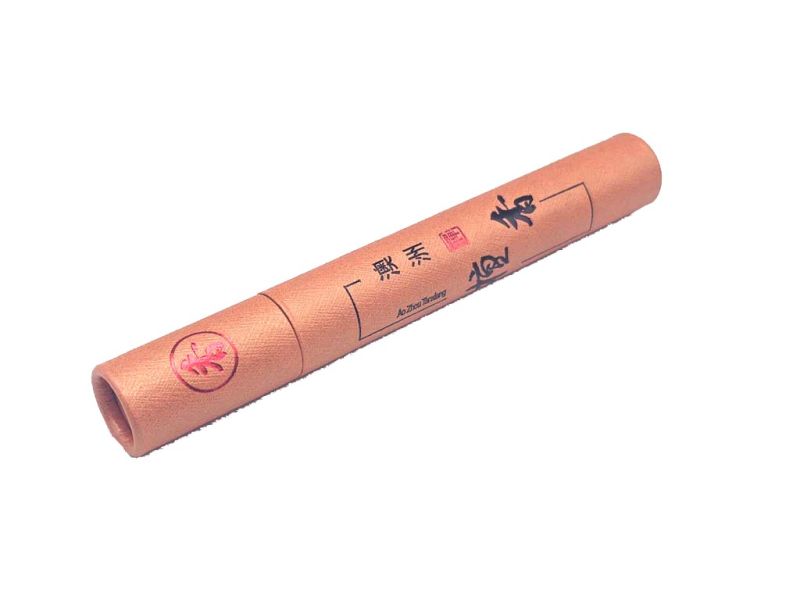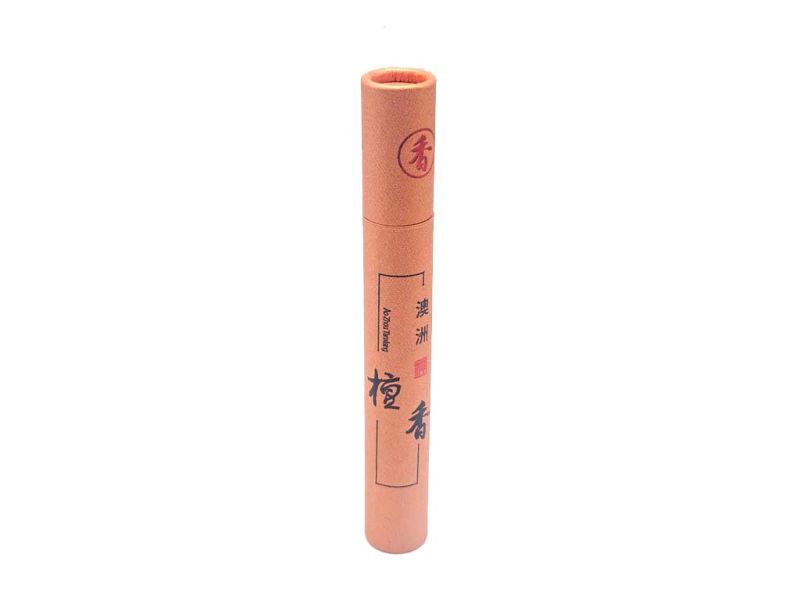Mini Sandalwood Incense Sticks – 30‑Min Burn
Chinese Natural Incense: A Sensory and Spiritual Journey
Incense holds a special place in Eastern cultures for millennia, and Chinese natural incense is no exception. Used to purify the air, accompany religious rituals, and create an atmosphere of serenity, incense is much more than a simple fragrance: it is a holistic experience that touches the soul.
The Ancient Art of Chinese Incense:
Chinese incense is renowned for its exceptional quality and numerous benefits. Made from 100% natural ingredients, this incense is composed of precious wood powders, aromatic resins, and essential oils. Each stick is the result of a millennia-old tradition, passed down from generation to generation, ensuring a pure and authentic product.
Description of Mini Sandalwood Incense Sticks:
Discover our mini sandalwood incense sticks, presented in a refined cream-colored cylindrical case. Each pack contains 5 g of fine sandalwood powder formed into 10.5 cm sticks, ensuring a slow, even burn of approximately 45 minutes per stick. When lit, they release a soft, creamy, and slightly spicy aroma—perfect for soothing the mind, purifying your space, and enhancing meditation or relaxation.
Key Features:
• Mini, portable format—ideal for travel or sampling this noble wood.
• 100% natural sandalwood powder, free of chemical binders.
• Controlled 45‑minute burn time, with minimal smoke and residue.
• Refillable, recyclable case with an elegant, understated design.
• Warm, creamy fragrance sourced from Indian and Australian forests.
To use, place a stick in a suitable incense holder, light the tip, then gently blow out the flame and let the resin burn. Treat yourself to a calming olfactory journey with this mini sandalwood format—a sublime fusion of ancient tradition and modern convenience.
Uses and Benefits:
Chinese natural incense can be used in various situations:
- Meditation and Yoga: Create a sacred space conducive to concentration with our incense sticks.
- Air Purification: Eliminate bad odors and purify the air in your home.
- Relaxation: After a long day, let the soothing aromas of our incense help you relax and refocus.
Information:
100% natural origin materials.
Ventilate the room after use.
Do not inhale smoke directly.
Keep out of reach of children.
Do not leave burning unattended.
History of Incense in China:
Incense has been used since ancient times in China, as well as in Europe, Africa, America, India, and the rest of Asia. At that time, and for millennia, incense was primarily used for religious and spiritual rites. The great ancient religions used a large amount of incense, consequently its trade quickly became a very lucrative activity. At that time, India and the countries in the southern Arabian Peninsula were the largest production areas in the world. Numerous “incense routes” were created to serve Europe and the rest of Asia, mainly by land.
The composition of incense varied from one continent to another, but the most used resin is produced from trees of the genus Boswellia from the Burseraceae family. This tree is native to Oman but is also cultivated in India, Yemen, and Somalia. It is the male tree that produces the resin used to make incense, but it must be at least 10 years old to obtain good quality resin. To harvest the resin, the bark of this tree is incised by removing a long and narrow strip. Then, this area is scraped to collect the resin concretions that fall into a container. Upon contact with air, the resin hardens and is harvested two or three weeks later.
During antiquity, in China, incense was considered more precious than gold. It was a prestigious material, on par with jade. In Egypt, the etymology of the word incense refers to the divine, as in Greece or among the Romans. Incense is also widely used by Christians, as it is part of the gifts that the Magi brought to Christ. The smoke from burning incense symbolizes in this religion the prayers that rise to the sky and to God. During Christian ceremonies, incense is burned in censers that are swung to diffuse its fragrance throughout the religious building.
Incense was very present in the rites of pagan religions, and it was quickly adopted by the great monotheistic religions for their own rites. Moreover, the composition of incense is mentioned in the Bible, as God supposedly gave the “recipe” for incense to Moses. Asian and American shamans quickly discovered that incense brought inner peace and serenity, the foundations of well-being according to them. They also made sick people inhale incense to treat certain diseases. For this purpose, they placed the resin on glowing charcoal or on a stone heated to incandescence.
Nowadays, incense is considered an objective ally of well-being. Indeed, its effectiveness is established by both Western and Eastern medicine for certain ailments such as Crohn’s disease, rheumatoid arthritis, or asthma. It is still used during religious rites all over the world, and many individuals use it privately, to purify the air in their homes in particular. The virtues of incense are unanimously recognized worldwide, in the fields of perfumery, health, and well-being.















